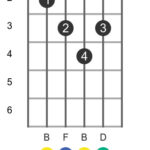When you’re exploring different speaker options for your guitar amp, particularly with amp modelers, it’s crucial to understand how a speaker cabinet can significantly alter your sound. It’s not simply about making your guitar louder; it’s about fundamentally shaping your tone. Many guitarists find that switching to a different type of cabinet results in a sound that, while not necessarily worse, is definitely different from what they initially anticipated.
The idea of “improvement” in guitar tone is highly subjective. If you’re using a linear or FRFR (Full Range, Flat Response) cabinet, what you’ll likely hear is a more accurate representation of the sound profiles as intended by their creators when they were using studio monitors. This can be eye-opening. You might discover you don’t prefer the raw profile sound, but the advantage is clarity. With a linear system, you gain a more transparent view of your guitar tone’s characteristics. This clarity makes it easier to identify and adjust aspects of your sound with precision and purpose. You’ll have a much better sense of what adjustments are truly needed to achieve your desired tone.
Think about listening to your guitar through a front-of-house (FOH) PA system at a venue, but at a lower volume. A quality FRFR cabinet is designed to provide a similar sonic experience. It aims to reproduce the full spectrum of frequencies without coloring the sound, unlike traditional guitar cabinets which are designed to impart their own tonal characteristics.
It’s important to clarify a common misconception: there isn’t actually a specific “FRFR cone.” Instead, achieving a genuinely flat frequency response, say from 70Hz to 17kHz, requires a combination of components and design. This typically involves a woofer for low frequencies, a tweeter for high frequencies, a crossover to direct frequencies appropriately, and, crucially, a well-engineered cabinet design. The fact that different “FRFR” cabinets on the market sound noticeably different should serve as a reminder that true flat response is a complex goal, and marketing terms can sometimes be misleading.
Regarding using a Kemper power amp with a cabinet, compatibility hinges on the cabinet type. To use a Kemper’s power amp section, the guitar cabinet must be a passive cabinet. Alternatively, if the cabinet has its own built-in amplifier, it must have the capability to bypass or switch off its internal amp to function correctly with the Kemper’s power amp.
For guitarists seeking a top-tier passive option, the Passive CLR cabinet is often highly recommended. It’s considered one of the best investments for the money in terms of sound quality and performance for amp modelers.
Finally, the perception of missing low frequencies isn’t solely determined by the speaker cone size. The overall cabinet design plays a more significant role in low-end response. While cone size contributes, factors like cabinet volume, porting, and internal construction are equally, if not more, important in determining how a cabinet reproduces low frequencies. For instance, the CLR, despite having a 12″ cone, is well-regarded for its balanced frequency response, including the low end.
Hopefully, this helps you understand the nuances of choosing the right speaker and cabinet for your guitar setup and how they interact with amp modelers like the Kemper.

